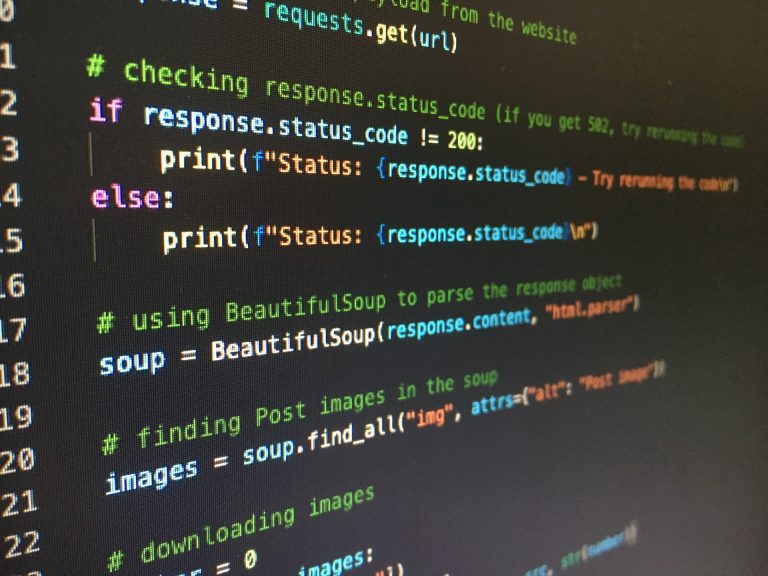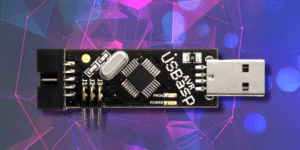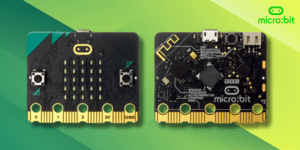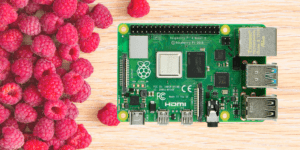Spis treści:
Raspberry Pi modules are not fundamentally different from ordinary desktop and laptop computers in terms of how software is developed for them – essentially the same programming languages, programming tools (e.g. IDE environments), and basic system applications are used. However, single board computers (SBCs) have a fundamental advantage over conventional machines as they allow low-level access to basic communication interfaces – General Purpose Input/Output (GPIO) pins and SPI, I2C or UART blocks – which makes them easy to integrate with external devices.
The ability to easily interface with sensor modules, relays, or low-power motor controllers is actually one of the main reasons for the Raspberry Pi‘s huge market success. Combined with low retail price and huge community support for Raspberry Pi, both in terms of software libraries and ready-made projects, such versatility makes Raspberry Pi a must-have for any fan of new technologies.
Python on Raspberry Pi – is it worth it?

It is certainly useful to master every programming language, because they are often similar to each other, and when learning another one, it is easy to notice more similarities, so they do not pose such a difficulty anymore. Then you will be able to determine yourself for what purposes to use which language. Depending on the need, they are more or less useful, while learning the basics of Python is considered by many as much easier than in case of other programming languages (e.g. C++). This language seems to be very versatile and if we get to know its syntax a little better and the libraries that complement it, it will open up more possibilities for us.
There are several reasons for this – easier handling of various types of data, simple and intuitive syntax and availability of thousands of ready-made libraries make Python an extremely accessible platform for beginners. Additionally, Python – as an interpreted language – does not require compilation, which speeds up and simplifies the process of creating and testing programmes.
The popularity and accessibility of Python has made the number of sample projects on Github, recordings on YouTube, or free online courses related to it almost dizzying. The language is so popular that even in case of encountering a problem, it is often enough to enter a keyword in a search engine, and it will not be difficult to find the answer. By the way, it is worth mentioning that this phenomenon also occurs for other popular programming languages.
In the case of the Raspberry Pi, the latter advantages are particularly evident, as the operating systems dedicated to the popular minicomputer (e.g. Raspberry Pi OS, formerly Raspbian) offer Python support on an “out of the box” basis, i.e. they provide basic functionality without the need to manually install any packages. Therefore, simple programs can be prepared right from the first boot.
What do you need to start your Raspberry Pi programming adventure?
The aforementioned built-in Raspberry Pi OS packages allow you to start writing Python programs right away, so you don’t need anything more to learn programming than the hardware itself – a Raspberry Pi and a set of essential accessories that includes a keyboard, USB mouse, power supply and (optionally) an HDMI monitor and, of course, a microSD card to act as a hard drive for the miniature computer.
Users familiar with Linux console and remote access can operate the minicomputer from any other machine connected to the same local area network as the Raspberry Pi – removing the need for USB input devices and an additional monitor, which is of considerable importance for those without sufficient desk space.
Most of the first programs will not require any graphics support, so a simple text console will be sufficient to create and run programs. However, if you want to start creating scripts using low-level hardware resources of your Raspberry, you have to remember to buy a contact board, a set of cables with BLS plugs and a set of basic electronic components – everything you will find (separately or in ready starter kits) in Botland shop.
We start writing our own programmes!
The functionality of the first programs written on personal computers is usually limited to displaying simple text or responding to characters typed by the user. The initial Raspberry Pi projects are no different – Python, like almost every other programming language, offers a number of built-in input (e.g. for capturing individual keystrokes) and output (e.g. for “printing” text in the console, like simple Hello World) functions.

Users of the Raspberry can easily control GPIO outputs using the RPi.GPIO library. The next stage, natural during the process of learning a new programming platform, is learning the basic principles of program syntax: handling variables and data structures, conditional instructions, loops, functions, or working with objects.
What is important, all more advanced external systems – e.g. Raspberry Pi Hat overlays with sensors equipped with SPI or I2C interfaces – can be operated using additional libraries, installed manually by the user and offering ready-made, easy-to-use functions, e.g. for reading sensor values or writing data to configuration registers. It is worth to choose branded plug-ins, as the leading manufacturers (DFRobot, Sparkfun or Adafruit) almost always provide well written and thoroughly tested libraries, as well as numerous example programs, thanks to which creating even advanced hardware projects is extremely easy.
How useful was this post?
Click on a star to rate it!
Average rating 0 / 5. Vote count: 0
No votes so far! Be the first to rate this post.






